How To Choose Interior Paint Colors For Your Home
Color is a crucial element in your life and certainly one of the most important interior design decisions you will make in your home or workplace. You may be wondering how to choose interior paint colors for your home. It’s an important choice that can have an impact on the atmosphere, elegance & overall satisfaction with your living spaces.
Color not only reflects your personal taste but also makes a statement about you. Color attracts attention, changes moods, inspires creativity. Color can express who you are and how you feel.
When you start thinking about what attracts your eye in things like furnishings, clothing, or accessories, you’ll probably notice some consistency and the colors you prefer.
How To Choose Interior Paint Colors for Your Home or Office

Choosing colors for your home can be quite a challenge. When faced with so many color choices, even if you don’t know where to start and feel overwhelmed, start with some basic color concepts that can help you find the right color.
Paint color chips are the best tools to start your search for the perfect colors for your home. They’re free and easy to find, and they come in thousands of colors.
Interior House Painting Color Psychology
Before you get started, ask yourself this question, “What do I want to achieve with the color?”
Red, for example, stimulates appetite and conversation. Green and blue are calming colors. Yellow stimulates creativity. Orange is a strong, vibrant color, the color spectrum equivalent to a double espresso. Brown conveys stability and reliability.
It brings warmth and comfort to many environments. White helps brighten a room. How you use color can also change the look of a room.
If you want to make a small room look open and airy, choose light colors. The repetition of colors visually connects spaces and creates a sense of harmony. Color can be used to highlight architectural features and define individual areas of your home.
Warm & Cool Interior House Paint Colors
If we look at the color palette, there are warm and cool colors on the palette.
Warm and cool tones can evoke certain emotions in a room, which should be considered as basic criteria when choosing colors.
Warm colors include red, orange, and yellow.
These colors are lively and cheerful and full of action and vitality.
Red, the warmest color among the warm colors, it is the most passionate of all colors.
Orange is the color of dialogue.
It is very common in kitchens and dining areas.
Yellow, a bright and cheerful color, can make the most boring room lively.
Cool colors are the opposite of warm colors.
These colors can promote relaxation and meditation.
They include green, blue, indigo, and violet.
Green, the color of nature, is a calming, cool color, very suitable for bedrooms and bathrooms.
Blue, my favorite color, is the color of the ocean, brings the feeling of a spa and a peaceful place.
Purple and indigo are more spiritual and ideological colors.
These colors are perfect for meditation rooms.
White represents purity, peace, and wisdom.
They match the other elements in the room, Very good for office spaces and any area where you need to think.
Black and brown are the colors of the land.
These colors in different shades are used throughout the house.
Now, when choosing a color, let’s see the function of that room.
Most homes have basic rooms that we are used to, such as a living room, dining room, and kitchen, or a bedroom and bathroom. Some larger residences have offices.
For many different reasons, some concepts apply to the selection of color.
They use a warm color and a cool color or opting for a palette dominated by neutral tones, which is influenced by several factors.
For example, the climate you live in – warm colors are generally more acceptable in cold climates, cool colors are more acceptable in warmer climates.
Similarly, the orientation of your windows- southern orientation will suggest choosing cool to neutral tones, and northern orientation would suggest using warmer tones.
Neutral Paint Colors
Want a wall color that will stand the test of time? Neutral colors stay true regardless of style or trend, making them just right for anyone who wants a look that will last.
If you’re looking to update your home decor and furnishings, a neutral wall color like grey or beige can provide a strong yet flexible foundation on which to build your home’s color palette.
This is key if you want your walls to be a backdrop rather than the focal point as neutral shades can be perfect for highlighting colorful decor pieces.
Bold-colored accent walls will be even more eye-catching if the other walls in your room are neutral.
Neutral colors can also be colorful, like a lighter version of bold color, giving them a feeling of warmth or coolness. Warm neutral shades with a hint of red or yellow, such as tan, will give your room a feeling of comfort and coziness.
A cooler neutral hue, like gray with undertones of blue-green, tends to give your room a calm, relaxing feel. Color palettes with gray tones can give a sophisticated, modern feel.
A light gray can create spaces that are fresh and sophisticated. And a darker gray has the same grounding qualities as black without being heavy.
The Function of a Space can Also be Important in Appropriate Color Selection
Warmer colors have a more active and exciting effect, while neutral and cooler colors tend to promote calm and contemplation.
These effects increase proportionally with the intensity of the color used. Personal preference is also an important factor.
A room used by one person will most likely show that person’s particular tastes, and a room used by multiple people must meet the needs of different preferences.
Many people may avoid using strong colors in these rooms. Remember, these are general techniques, it is not an absolute principle that must be followed.
Should I Choose Dark or Light Colors for House Painting
Darker wall color can highlight light objects in a room, creating an instant focal point. Keep the following tips in mind when choosing colors.
When looking at a color strip, remember that deep accent colors can appear more intense on a wall and lighter colors can appear even brighter. If you prefer a softer look with a hint of color, look at the top two colors of a color stripe.
If you want to add drama to a room, choose colors from the middle range. If you want to add a bold accent, choose colors from the lower range of a color stripe.
The color you end up choosing will be affected by the light in your room. So take home paint chips or actually try a color on your wall with take-home paint swatches to see how the color works during the day and at night. You’ll find that incandescent or fluorescent lights have a different effect on color than natural daylight.
Coordinate Color With Existing Furnishings
When choosing colors for your home, you can use the room to help you decide.
Look at floors, cabinets, tile, window decorations, as well as any large pieces of furniture. Look for the main colors that are already present in these pieces and use them as a guide.
Start by choosing a focal point around which the rest of the room will be designed. This can be a piece of art, a piece of furniture, a rug, or even a pillow.
Then coordinate everything else in the room with this element, including flooring, additional furniture, curtains, lighting, and of course, color.
A great way to make sure you choose colors that are perfect for your space is to bring fabric swatches, pillows or other accessories from your home to the store to help you choose.
After you’ve selected a few colors to consider, it’s time to test those colors in your home.
Consider Room Lighting
Often, when choosing the right shade, lighting is a deciding factor. If a room has very little natural light, you may want to brighten up that room, paint it lighter and cooler tones.
If a room has a lot of sunlight and you want to make that room quieter, consider giving it a deeper and richer color.
It’s important to consider how the lighting in the room can affect the colors. Lots of natural light can tend to make colors appear brighter, while lower light levels can make them appear darker.
For this reason, it’s important to test the colors in the room you plan to paint. Get several shades of the colors you like, then paint small patches on the wall to see which color works best in the room.
Try this in sunny and cloudy weather, as the appearance of the paint will change in different types of natural light.
Also, consider testing the color in several places in the room, near the window, at the top of the trim, and at the bottom of the floor, so you can see how the colors work with these elements to get your room exactly where you want it.
Once you find your main color, use it as a springboard to create a full palette.
A painted trim can really make your room pop, but it doesn’t have to be a white shade. You can also consider colors like taupe or black for the trim. The color of the ceiling also plays a big role in determining the feel of the room.
An accent color can be a nice design touch for the ceiling. However, if it’s a smaller room with walls in neutral tones, paint the ceiling the same color to make the room feel more spacious.
A foolproof way to create a sophisticated color palette is to pick one color and use it in many shades. For example, if blue is your color, try pairing gray-blue upholstered furniture with a navy blue rug and light blue walls.
Layering within the same color palette will create a rich look without taking a huge risk. Before you pick up your final colors, measure the room you want to paint and bring that information with you to make sure you get the right amount of paint and supplies.
What Types of Paint Finishes Should I Choose?
The type of finish you choose, flat, satin, or semi-gloss, can also affect how the color interacts with light.
For example, a semi-gloss finish reflects more light and makes a room brighter. To achieve a consistent look in a room, limit the number of colors you use. Be sure to consider all the other elements, such as flooring, furniture, and accessories, in addition to the color. Once you’ve lived with a color for a while, you’ll quickly determine if it gives the look & feel you want.
Remember that decorating with color is not a science. When it comes to how to choose interior paint colors for your home, there are no hard and fast rules. Choosing a color is a form of self-expression. Whether playful or sophisticated, delicate or bold, restful or invigorating, color is important.
Now you know a little more about how to strategize and coordinate to achieve the perfect color selection for your home.
The Article How to Choose Interior Paint Colors for Your Home First Appeared ON
: https://gqcentral.co.uk
 Local Packs continued their steady climb started in January. My sense is that this is being driven by a combination of more and more regions “opening up” combined with the onset of Spring. If you’re a pure e-commerce player, this may be why your organic click growth may be not growing even as search volume grows. Local retailers may want to check their GMB and/or in-store activity against their e-commerce traffic as these “Local” elements may be growing at e-comm’s expense.
Local Packs continued their steady climb started in January. My sense is that this is being driven by a combination of more and more regions “opening up” combined with the onset of Spring. If you’re a pure e-commerce player, this may be why your organic click growth may be not growing even as search volume grows. Local retailers may want to check their GMB and/or in-store activity against their e-commerce traffic as these “Local” elements may be growing at e-comm’s expense. The presence of People Also Ask widgets grew by about four percentage points. PAAs have been the steadiest growing SERP Feature for the past year. Start answering those questions people!
The presence of People Also Ask widgets grew by about four percentage points. PAAs have been the steadiest growing SERP Feature for the past year. Start answering those questions people!
 In February both of these elements were growth outliers. In March, these money-makers continued to grow with Ads up ~five percentage points and Shopping Boxes up ~1.4 points. My guess is that thanks to the opening up, Spring, and stimulus checks, people are spending money and businesses want to make sure that money gets spent in the right place.
In February both of these elements were growth outliers. In March, these money-makers continued to grow with Ads up ~five percentage points and Shopping Boxes up ~1.4 points. My guess is that thanks to the opening up, Spring, and stimulus checks, people are spending money and businesses want to make sure that money gets spent in the right place.





 Google Testing 2 Pack for Local Maps
Google Testing 2 Pack for Local Maps





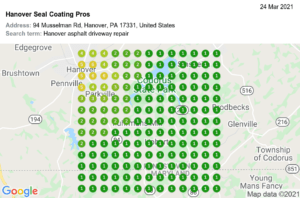

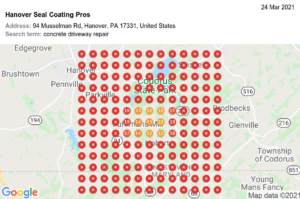
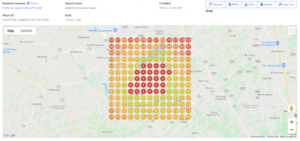
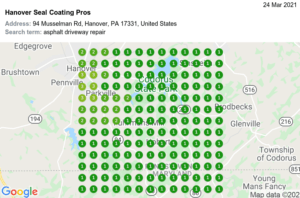
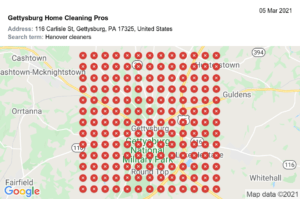
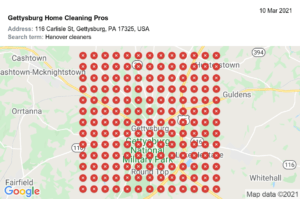

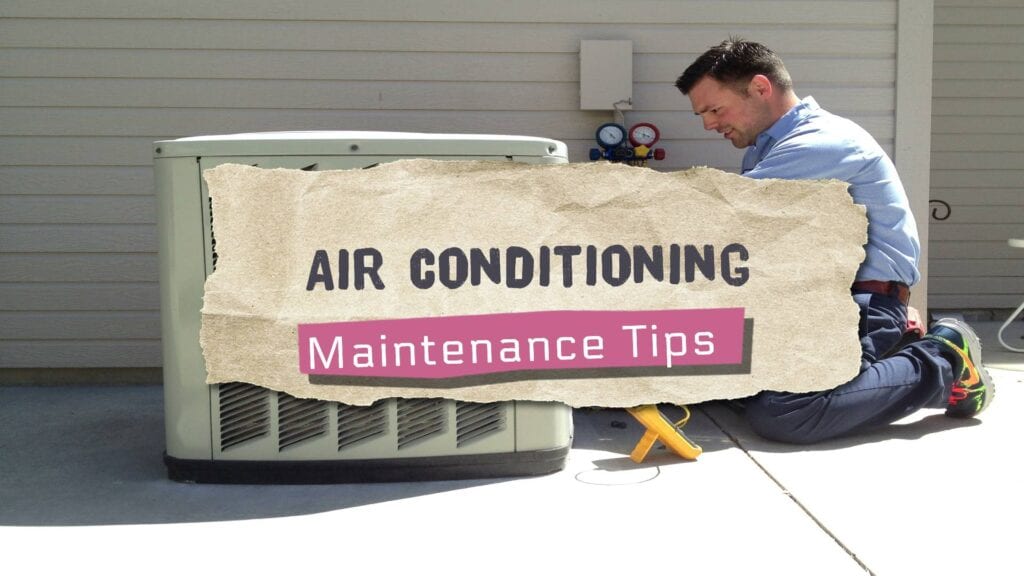










![How to Verify Your Facebook Page in 5 Steps [+ Why You Should]](https://localseoresources.com/wp-content/uploads/2021/04/tswift.png3Fwidth3D150026name3Dtswift.png)









